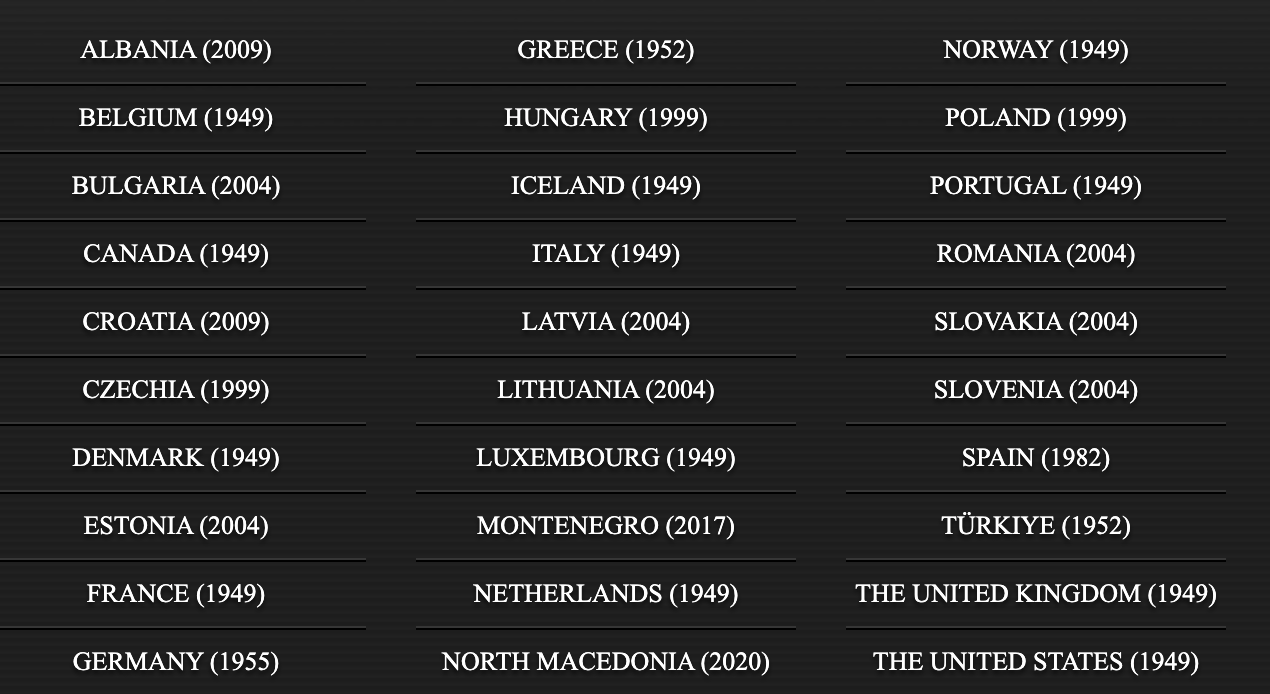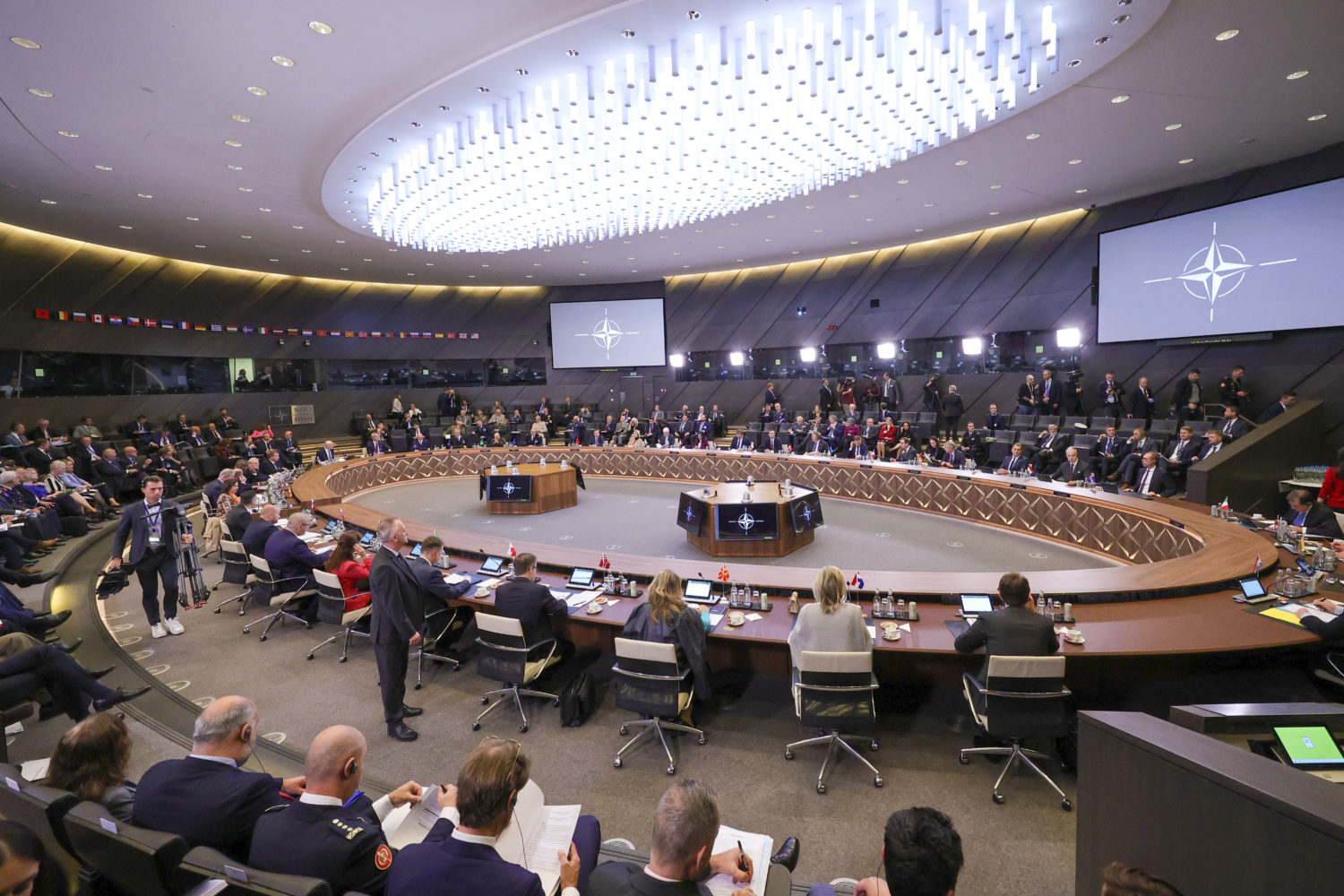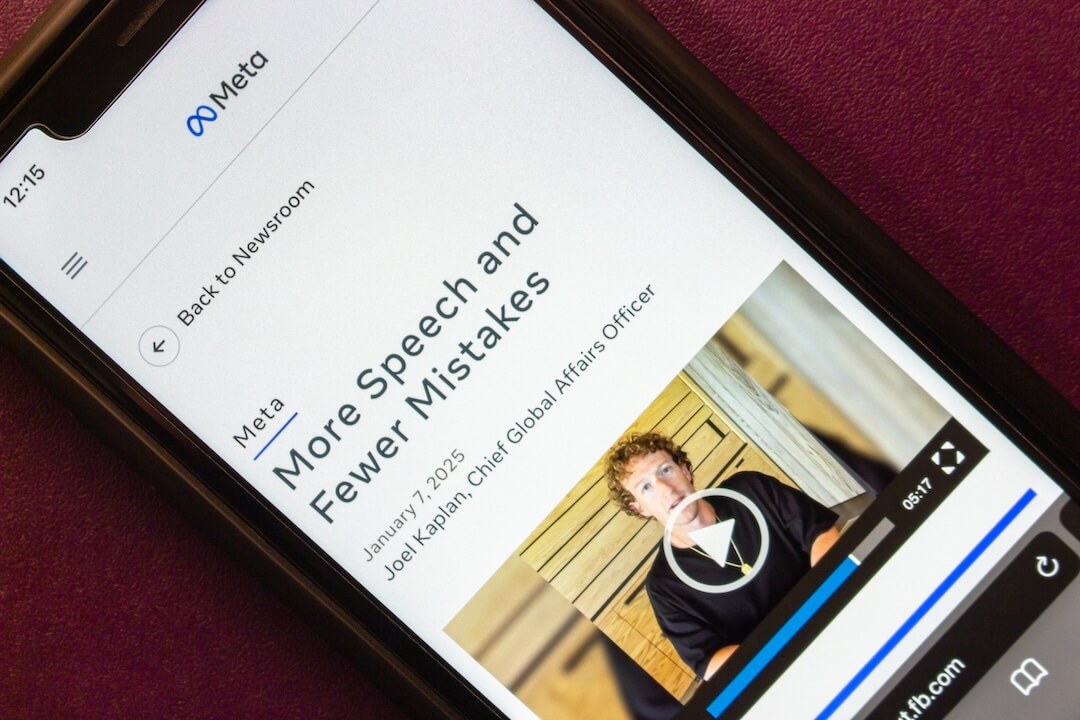
The Morning Meeting with Al Tompkins is a daily Poynter briefing of story ideas worth considering and other timely context for journalists, written by senior faculty Al Tompkins. Sign up here to have it delivered to your inbox every weekday morning.
The stakes could not be higher today. A missile landed in Poland and the question is whether it is a Russian attack, a mistake or some other explanation. Russia’s Defense Ministry said it did not strike any targets in or near Poland.
Poland is a member of the North Atlantic Treaty Organization. There are currently 30 NATO members:

(NATO)
NATO is both a political alliance and a military alliance. NATO explains the partnership this way:
POLITICAL — NATO promotes democratic values and enables members to consult and cooperate on defense and security-related issues to solve problems, build trust and, in the long run, prevent conflict.
MILITARY — NATO is committed to the peaceful resolution of disputes. If diplomatic efforts fail, it has the military power to undertake crisis-management operations. These are carried out under the collective defense clause of NATO’s founding treaty — Article 5 of the Washington Treaty or under a United Nations mandate, alone or in cooperation with other countries and international organizations.
A few weeks ago, CBS News reported from Romania where the 101st Airborne Division was deployed for the first time since the Second World War. The 101st is the closest U.S. troops to Ukraine currently. The video from that story sends chills down one’s spine today as you see U.S. soldiers in a “combat deployment” not a training exercise.
Article 5 is the reference you will hear most of today. Article 5 provides that if a NATO Ally is the victim of an armed attack, each and every other member of the Alliance will consider this act of violence as an armed attack against all members and will take the actions it deems necessary to assist the Ally attacked. The exact language says:
Article 5
“The Parties agree that an armed attack against one or more of them in Europe or North America shall be considered an attack against them all and consequently they agree that, if such an armed attack occurs, each of them, in exercise of the right of individual or collective self-defense recognized by Article 51 of the Charter of the United Nations, will assist the Party or Parties so attacked by taking forthwith, individually and in concert with the other Parties, such action as it deems necessary, including the use of armed force, to restore and maintain the security of the North Atlantic area.
Any such armed attack and all measures taken as a result thereof shall immediately be reported to the Security Council. Such measures shall be terminated when the Security Council has taken the measures necessary to restore and maintain international peace and security.”
This article is complemented by Article 6, which stipulates:
Article 6
“For the purpose of Article 5, an armed attack on one or more of the Parties is deemed to include an armed attack:
• on the territory of any of the Parties in Europe or North America, on the Algerian Departments of France 2, on the territory of Turkey or on the Islands under the jurisdiction of any of the Parties in the North Atlantic area north of the Tropic of Cancer;
• on the forces, vessels, or aircraft of any of the Parties, when in or over these territories or any other area in Europe in which occupation forces of any of the Parties were stationed on the date when the Treaty entered into force or the Mediterranean Sea or the North Atlantic area north of the Tropic of Cancer.”
Some Article 5 facts from NATO:
- NATO invoked Article 5 for the first time in its history after the 9/11 terrorist attacks against the United States.
- NATO has taken collective defense measures on several occasions, including in response to the situation in Syria and the Russian invasion of Ukraine.
- NATO has standing forces on active duty that contribute to the Alliance’s collective defense efforts on a permanent basis.
- When the implementation of political decisions has military implications, the key actors involved are: the Military Committee, composed of the Chiefs of Defense of NATO member countries; the International Military Staff, the Military Committee’s executive body; and the military command structure, composed of Allied Command Operations and Allied Command Transformation.
- NATO has very few permanent forces of its own. When the North Atlantic Council agrees to launch an operation, members contribute military forces on a voluntary basis. These forces then return to their countries once the mission is completed.
The chances of a national railroad strike just went up, way up
A third railroad union just voted to reject the proposed contract with railroad companies, which raises the possibility of a national railroad strike that would throw the U.S. economy into chaos. The International Brotherhood of Boilermakers only represents 300 workers who repair and rebuild diesel locomotives and railroad tracks, but under the labor agreement with rail companies, if any of the 12 unions covered in the contract does not go along with the agreement, then the other unions would go along with the strike. In all, 13 unions represent more than 100,000 workers, and now three of the 12 unions have voted no to the deal that was worked out in September at the behest of the Biden administration.
Brotherhood of Maintenance of Way Employees District (BMWED), and the Brotherhood of Railroad Signalmen also voted against the agreement.
A strike could happen any time after December 9th. CNN explained:
About 30% of US freight, when measured by weight and distance traveled, moves by rail. Any prolonged strike could send prices for goods from gasoline to food to cars soaring. In addition, factories could be forced to shut temporarily due to parts shortages. Products that consumers want to buy could be missing from store shelves.
Congress could act to prevent a strike but does not want to get involved. CNN added:
Control of the House of Representatives in the new Congress is still unknown as vote counting continues in the wake of last week’s midterm elections. But Democrats will still have control of the House and Senate during the so-called lame duck session through the end of the year. It would still require a certain level of bipartisanship to get legislation through both houses of a closely divided Congress to end or prevent a strike.
Largest higher education strike in U.S. history
The University of California’s system of 10 colleges and universities is the nation’s largest, and 48,000 student workers there went on strike. It is the biggest labor action in America’s higher education history. What’s more, it rips the bandage off a nagging issue at universities around the country,
Graduate students, teacher’s assistants and others across the UC system walked off the job, demanding higher pay, child care benefits and job security. The size of the interruption shows how much schools depend on student workers. UC schools closed classrooms and moved classes online and all of this comes as they head into the busiest time of the year, when students are working on final projects and research papers.
The implications of the UC strike are important nationally. The New York Times notes:
In recent years, efforts to increase pay and improve working conditions for graduate students have increasingly gained traction. The U.C. strike demonstrates the growing activism of graduate students in the face of uncertain career prospects and shaky economic conditions, said Paula Voos, a professor at the Rutgers School of Management and Labor Relations.
CBS’ new investigative unit asks why elementary children are arrested at school
The new CBS News Local News Innovation Lab just released its first major investigation and it was a shocker. The innovation lab sews together the network’s local stations into a national investigative effort that “found more than 700 children (fifth grade and younger) were arrested in U.S. elementary schools during the 2017-2018 school year alone.”
The investigation found:
Children with documented disabilities were found to be four times more likely to be arrested at school, according to the analysis of the 2017-18 U.S. Department of Education data. Black students were even more disproportionately affected. They made up nearly half of all arrests at elementary schools during the 2017-18 school year even though they accounted for just 15 percent of the student population in those schools.
Chad Cross, vice president of content development — CBS News and stations, said the investigation has roots in WBBM-TV investigative reporter Dave Savini’s reporting on arrests at schools in the Chicago area. “We decided it was something to scale across our station group, and also we chose to look at the youngest age group (fifth grade and younger), something we believe has not been reported on previously.”
I asked my friend Stephen Stock, who led this investigation, to explain where he got the data behind the story and how other journalists could follow up on his work:
What surprised you most about what you discovered?
I was most surprised by … more than 700 children 5th grade and younger were arrested nationwide. And while the trend has gone slightly down over the last couple of years of data cycles it STILL shows hundreds of young children continue to be arrested at school, year in and year out. I was also very surprised that data showed such a drastic disparity of Black children being arrested (5.5 times higher rate than their white counterparts) and disabled children being arrested (4 times higher rate). We expected there to be a disparity but not quite that great a disparity. Clearly the Department of Education anticipated this as they ask for those details in order to show these gaps in arrests (and referrals to law enforcement by the way.)
Where did you get the data that you used to build the investigation?
We got the data from the US Department of Education’s office of civil rights. They collect this from nearly every school in the country every two years. They’ve been doing it for decades. They also collect data on restraints and isolation rooms (as well as other data.). Again, this data is self-reported by individual schools and school districts and not by the state. It’s data that is often ignored or not given serious attention by the media. Something like 98% of all public schools respond to the data. The data can be messy as it is self-reported. There are sometimes mistakes or misreporting because school employees misunderstand definitions or the rules. Where there were questionable data or huge anomalies, we discarded the data in order to be as conservative in our analysis as possible.
What advice would you give to others who want to go after this issue?
I think journalists must think outside the box. They must push themselves to not accept it because officials say “that’s the way it is.” They must imagine not all is, as authorities say, “fine” or “no news.”
In fact, there is much research that dispels the “myth” that school resource officers make “schools safer” by being on campus. Especially in a time when mass shootings at schools gain the attention of the public (although those shootings are a very small percentage of all deaths by firearms in America every year) most of us think intuitively that SROs make students safer.
When, in fact, academic research shows the presence of SROs increases the likelihood of students being referred to police and arrested. We ran into many reporters (colleagues) who could not get across that mental hurdle … could not fathom that SROs increase arrests (and for very minor things, like spitting or misbehavior). They refused to even entertain the idea that there might be a better way or that the presence of an SRO is detrimental to children. I think this story is an example of how journalists should always question authority and assumptions we all make.
Journalists have to push for accountability and for answers and for a better understanding of what could be accepted status quo. I don’t want to draw too fine a parallel on this, but segregation was once “accepted” and taken as the “status quo” in many communities. Journalists need to always be pushing back and asking questions and not accept things just because those in power say, “that’s the way it is” and “there’s nothing to see here … no problems.”
While there are plenty of good reasons to worry about the loss of local media ownership, this is an example of how group ownership can elevate local journalism. Local stations may not make much of a splash when they are the lone voice raising concerns but coast-to-coast and border-to-border coverage of the same issue puts it in front of people who can change things.
Other ownership groups in various media have seen the power of this kind of partnership. Tegna and Gray broadcasting groups have both produced significant investigative projects that are bigger than any of their local stations could have pulled off by themselves.







